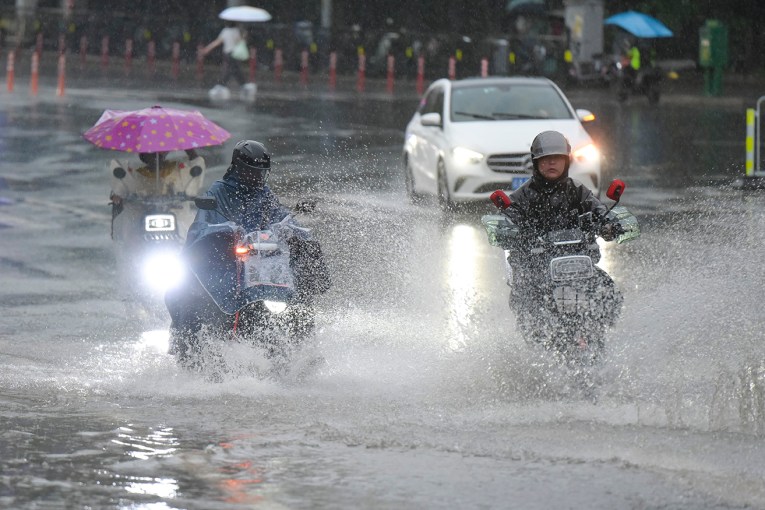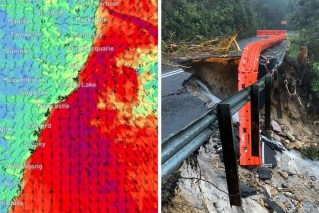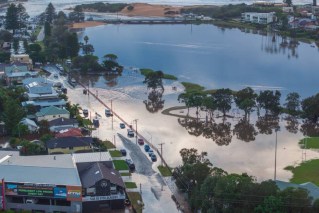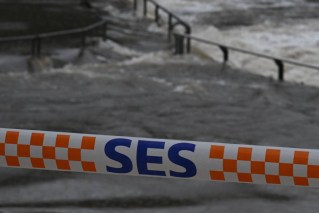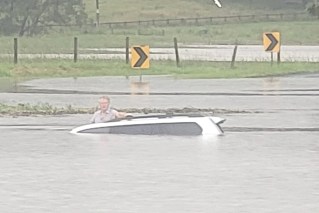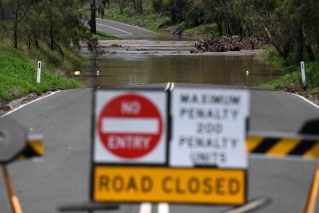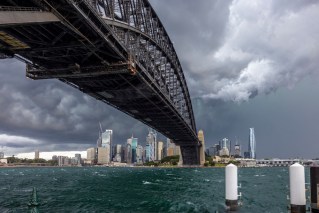Arctic ice might affect hurricanes
A hurricane hunter aircraft sent to the Arctic to study ice formations, returned this month with critical data that might explain why an increasing number of tropical storms seem to be taking irregular paths.
Scientists are trying to determine how much heat is released into the atmosphere when Arctic ice builds up in autumn.
They say that heat release is believed to shift the jet stream – a fast-moving, high altitude river of air – farther to the south which, in turn, might be slowing down or even stalling tropical systems, before they can re-curve east and out to sea.
Kevin Wood, a University of Washington research scientist aboard the plane, says the Arctic heat release also might trigger other extreme weather events, such as flooding or severe snowstorms.
“That’s far from proven,” he said.
“But it’s one of things we’re interested in understanding better.”
Primarily, however, scientists hope the battery of sensors on board the National Oceanic and Atmospheric Administration WP-3 Orion might help them understand why Superstorm Sandy ploughed into the East Coast last year and why eight systems aimed at Canada or the northeast in the past three years.
“The very unusual path that Sandy took last year was definitely due to disruptions in the global circulation, and maybe that was related to changes in the Arctic,” said Nick Bond, a University of Washington scientist who rode on the plane during its inaugural Arctic mission.
In October 2012, Sandy emerged in the Caribbean as a tropical storm, grew into a hurricane and initially began to curve northeast on a path that would have taken it toward the North Atlantic.
Instead, Sandy curved northwest toward the New Jersey coastline, collided with a winter system and swamped much of the mid-Atlantic and northeast with a powerful storm surge, even though it had been downgraded to a post-tropical system just before landfall.
Some other hurricanes that have aimed north instead of heading east in recent years include Earl, which hit Nova Scotia and Igor, which brushed Newfoundland, both in September 2010.
Irene hit the northeast as a tropical storm in August 2011 and Ophelia hit Newfoundland as a tropical storm in October 2011.
The hurricane hunter, normally based at MacDill Air Force Base in Tampa, Florida, conducted eight research flights over Arctic regions between October 21 and November 6 and studied ice formations in the Chukchi and Beaufort seas, at times flying well north of the Arctic Circle.
“While we couldn’t have spit on the North Pole, it wasn’t that far away,” Bond said.
In addition to bolstering understanding of hurricane paths, the heat release study provided insight into how fast the volume of polar ice is diminishing, a primary reason for sea level rise, a critical issue in low-lying Florida.
Bond said the faster the ice builds up, the more heat is released into the atmosphere.
“We could see and feel the tremendous amount of heat coming out of the ocean,” he said.
“That’s what it takes to make ice, to lose heat like crazy.”
Equipped with more sensors than a fleet of satellites, the NOAA aircraft collected a wide range of data from sea ice thickness to solar heating.
Much as they do when investigating tropical storms, scientists dropped probes out of the plane to better understand the atmosphere which measured temperature, wind direction and barometric pressure.
Scientists praised the WP-3 Orion’s versatility.
“You can liken it to a weather station on steroids; you can take it anywhere,” Bond said.
“It allows unique measurements that you can’t get any other way.”
One reason the plane made the Arctic trip was because the hurricane season in the Atlantic has been remarkably slow.
The scientists hope next year’s season will be as calm so they can hop another flight over the Arctic.
“We know we obtained data that was unique and important,” Bond said.
“We’re greedy, and we want more.”
